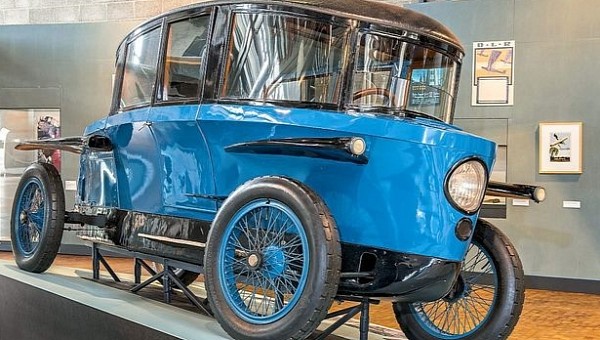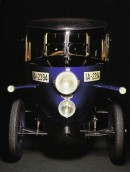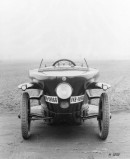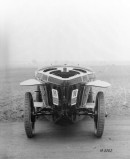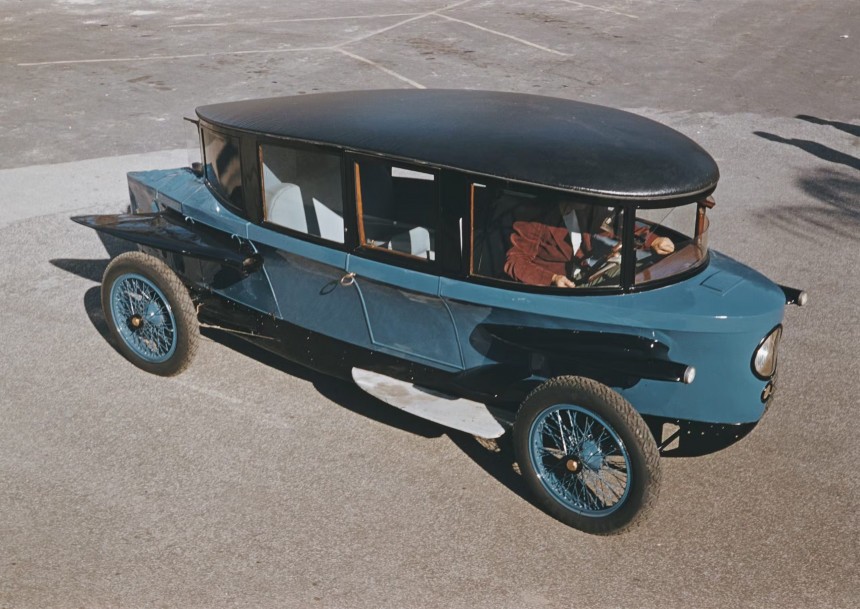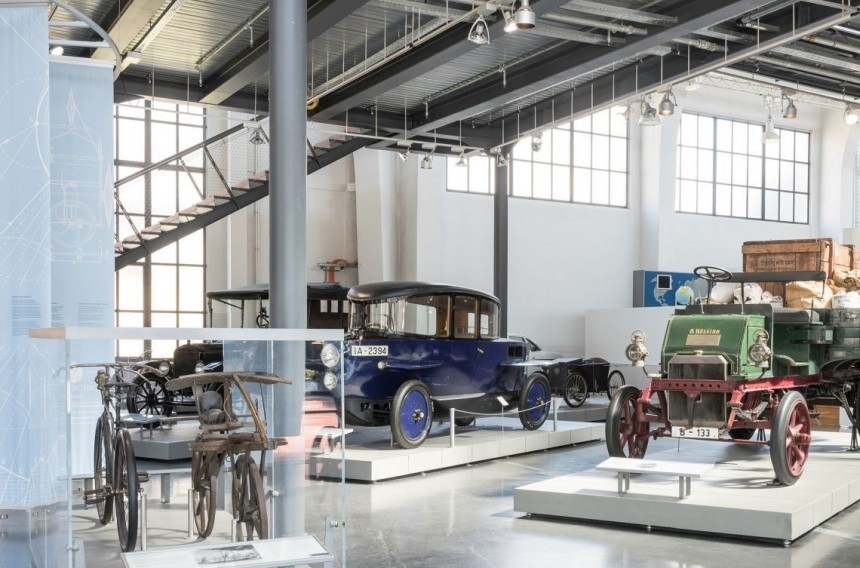Prior to the Second World War, engineering advancements in aeronautics often previewed analogous developments in automobiles and vice versa. And that might have something to do with the fact that many of the engineers of that period used to shift between these two fields, and they tried to implement their new ideas and innovations in whatever project they were working on.
Vienna-born Edmund Rumpler was one of those engineers. He became known as a manufacturer of airplanes but left his mark on the automotive industry as the creator of what may very well be the first mid-engine production car, the Tropfenwagen.
At the beginning of his career in the automotive sector, Rumpler collaborated with Hans Ledwinka on the first Tatra car, the Präsident. He then also worked with Daimler and Adler. He was actually named technical director of the latter in 1902. Several important innovations are linked to his name, including the design of the first German engine that combined the motor and gearbox into a single unit and the swing axle rear suspension.
However, his most incredible innovation, one that changed how automobiles were designed forever, was the mid-engine layout of the Tropfenwagen.
Presented at the Berlin Auto Show in 1921, the Tropfenwagen surprised professionals and laymen alike through various innovations, actually. Rumbler implemented his newfound ideas on aerodynamics from planes into the design of this vehicle. As such, the car took the shape of a teardrop, hence the name Tropfenwagen, which means “drop cart.” As it turns out, the inspiration for the coachwork was a Zeppelin’s gondola.
Additionally, this aerodynamic shape was enabled by the world’s first single plane curved windows. Not only the windscreen but also the side windows of the car were significantly curved.
Other features that helped smooth its shape were the integrated front headlights, air intakes at the back of the vehicle, along with a completely enclosed underbody.
It featured a rounded, voluptuous front end with a pointed rear end, a design that was considered unusual and futuristic at the time, considering the automobiles of that era were very square-shaped. The car rode on a set of wheels in the form of smooth, flat discs.
Given the shape and the interior space thus created, the driver’s compartment was placed at the front with the highest visibility, and seating for four passengers was added toward the back.
In those days, cars had the engine mounted up front, ahead of the driver, and the passenger compartment at the back, designed as a block. The front usually featured a grill to hold the radiator. This layout was not very efficient, as it disturbed the air and slowed the vehicle.
Rumbler mounted a 2.6-liter, 36 hp (36.5 ps) W6 engine just ahead of the rear axle and bolted it to a three-speed manual transaxle. The engine, transmission, and final drive were built as a unit.
Though this new configuration was not yet proven to improve driving performance, it did help achieve better aerodynamics. Volkswagen engineers measured the drag coefficient of a Tropfenwagen in 1979, and the car was found to have a drag coefficient of only 0.28, a figure that would be competitive even by today’s standards. For a bit of perspective, a C6 Chevrolet Corvette has a 0.34 score.
The engine’s meager 36 hp managed to endow the car with a top speed of 70 mph (110 kph), a performance that caught the attention of Benz representatives, who later used Rampler's design for both Grand Prix and sports car applications, like the Mercedes-Benz Tropfenwagen racers (Typ RH).
Production of the Rumpler Tropfenwagen began in 1921. Though futuristic for its time, only about 100 cars were built due to poor demand.
It also proved to have some reliability, cooling, and steering issues, not to mention it lacked luggage space - but the vehicle was still used in Berlin as a taxicab.
Production of the Rumpler Tropfenwagen stopped in 1925, and today only two units are known to survive - one resides at the MVG Public Transportation Museum in Munich and the other is on display at the German Museum of Technology in Berlin.
At the beginning of his career in the automotive sector, Rumpler collaborated with Hans Ledwinka on the first Tatra car, the Präsident. He then also worked with Daimler and Adler. He was actually named technical director of the latter in 1902. Several important innovations are linked to his name, including the design of the first German engine that combined the motor and gearbox into a single unit and the swing axle rear suspension.
However, his most incredible innovation, one that changed how automobiles were designed forever, was the mid-engine layout of the Tropfenwagen.
Presented at the Berlin Auto Show in 1921, the Tropfenwagen surprised professionals and laymen alike through various innovations, actually. Rumbler implemented his newfound ideas on aerodynamics from planes into the design of this vehicle. As such, the car took the shape of a teardrop, hence the name Tropfenwagen, which means “drop cart.” As it turns out, the inspiration for the coachwork was a Zeppelin’s gondola.
Additionally, this aerodynamic shape was enabled by the world’s first single plane curved windows. Not only the windscreen but also the side windows of the car were significantly curved.
It featured a rounded, voluptuous front end with a pointed rear end, a design that was considered unusual and futuristic at the time, considering the automobiles of that era were very square-shaped. The car rode on a set of wheels in the form of smooth, flat discs.
Given the shape and the interior space thus created, the driver’s compartment was placed at the front with the highest visibility, and seating for four passengers was added toward the back.
In those days, cars had the engine mounted up front, ahead of the driver, and the passenger compartment at the back, designed as a block. The front usually featured a grill to hold the radiator. This layout was not very efficient, as it disturbed the air and slowed the vehicle.
Rumbler mounted a 2.6-liter, 36 hp (36.5 ps) W6 engine just ahead of the rear axle and bolted it to a three-speed manual transaxle. The engine, transmission, and final drive were built as a unit.
Though this new configuration was not yet proven to improve driving performance, it did help achieve better aerodynamics. Volkswagen engineers measured the drag coefficient of a Tropfenwagen in 1979, and the car was found to have a drag coefficient of only 0.28, a figure that would be competitive even by today’s standards. For a bit of perspective, a C6 Chevrolet Corvette has a 0.34 score.
Production of the Rumpler Tropfenwagen began in 1921. Though futuristic for its time, only about 100 cars were built due to poor demand.
It also proved to have some reliability, cooling, and steering issues, not to mention it lacked luggage space - but the vehicle was still used in Berlin as a taxicab.
Production of the Rumpler Tropfenwagen stopped in 1925, and today only two units are known to survive - one resides at the MVG Public Transportation Museum in Munich and the other is on display at the German Museum of Technology in Berlin.
